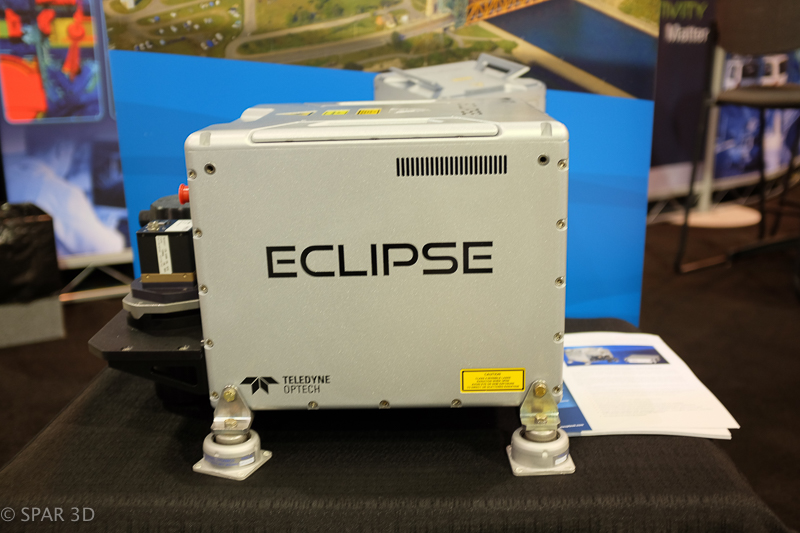At SPAR 3D 2016, Teledyne Optech has announced the Eclipse. This new autonomous airborne mapping solution is designed to completely eliminate the need for a system operator or an operator interface.
Notably, the system is not designed for use with UAS. As a representative from Teledyne Optech explained during a product presentation on Monday, it is “designed to operate without an operator, but in a piloted ultralight aircraft.”
Later in the presentation, he explained why the Eclipse can be seen as Optech’s response to the UAS. “The reality is that, if you’re looking for high-grade LiDAR data on a UAS platform today, you’re going to need one of a certain size, and that’s generally going to run you 80 to 100 thousand dollars. And the LiDAR sensors that collect data at a 5mm range resolution, they’re going to be at least two or three kilos, and 150 thousand dollars. When you put these things together—and the platforms have a tendency to crash—it really starts to play with the feasibility in terms of asking, Is this really ready and deployable at this date in time?”
Optech intends the Eclipse to be a “relatively low price” LiDAR solution for use in smaller project areas where UAVs might be prohibitively expensive or simply impossible to use due to current regulations.
As for hardware, the Eclipse incorporates passive capture in the form of a full electronic camera with a shutter system built for automatic capture and reliability. For active capture, the system utilizes a rotating polygon LiDAR scanner capable collecting 4-25 points per square meter “from a rapidly moving aircraft.”
As data is collected, it is written to a removable hard drive, which can then be attached to a computer running Teledyne Optic’s LiDAR Mapping Suite for processing.
Teledyne Optech will begin shipping this solution in quarter three of 2016.






